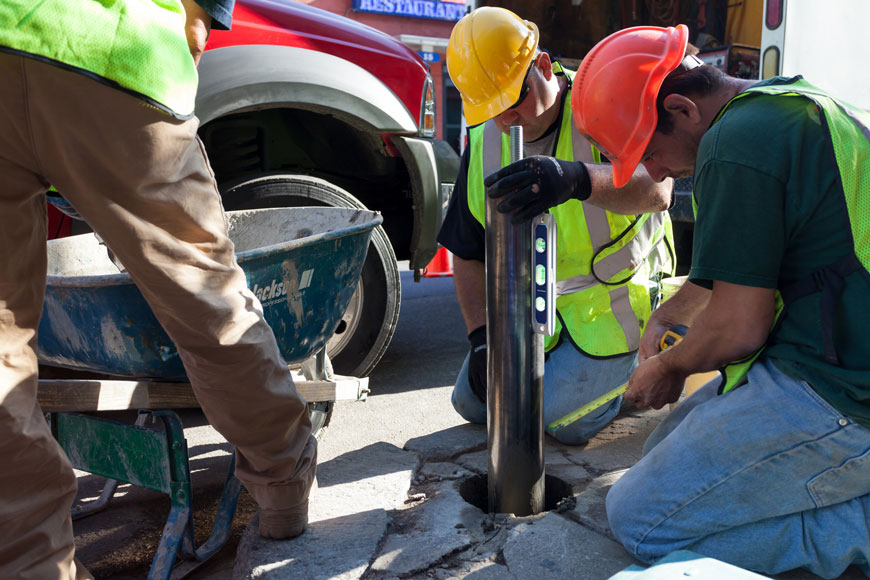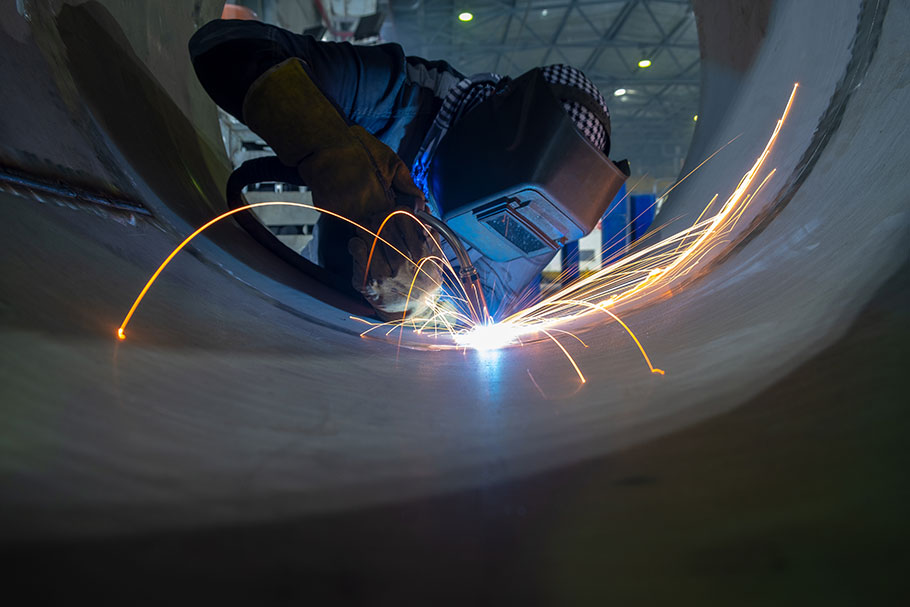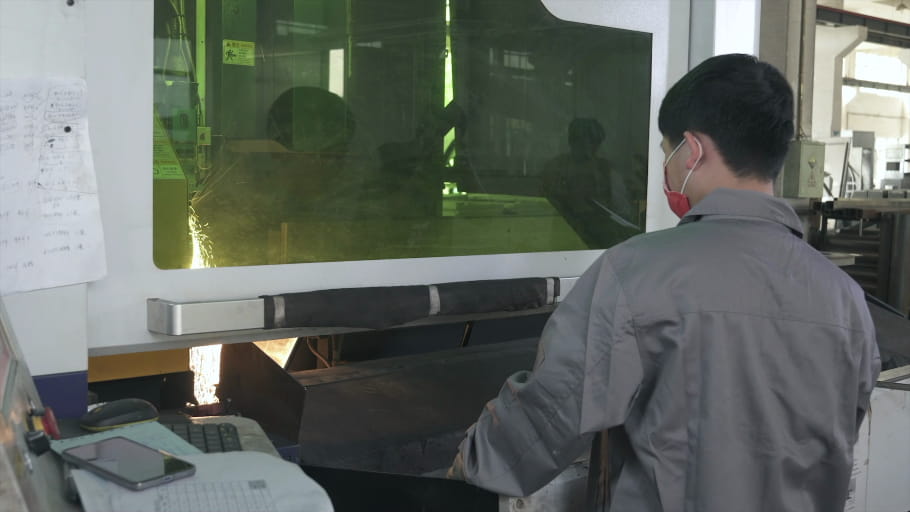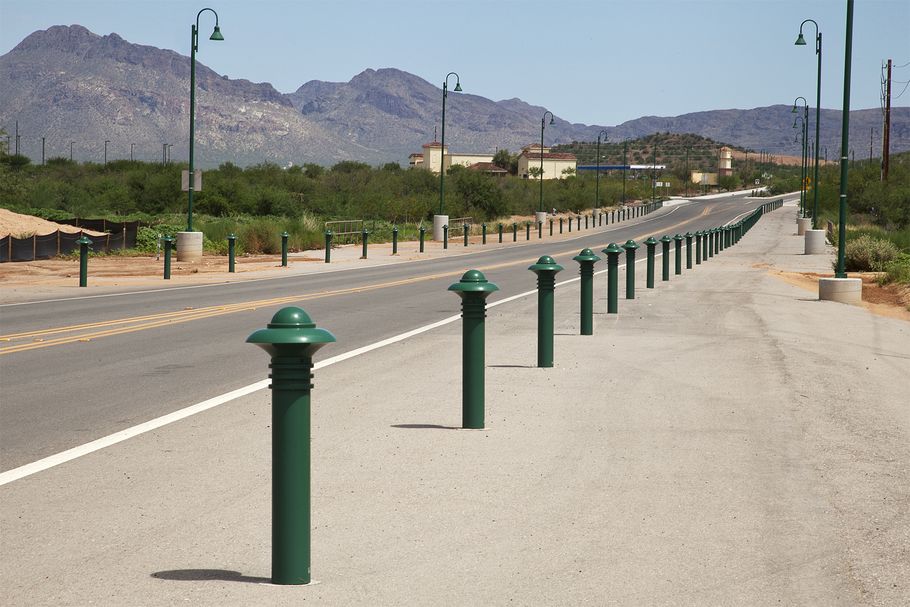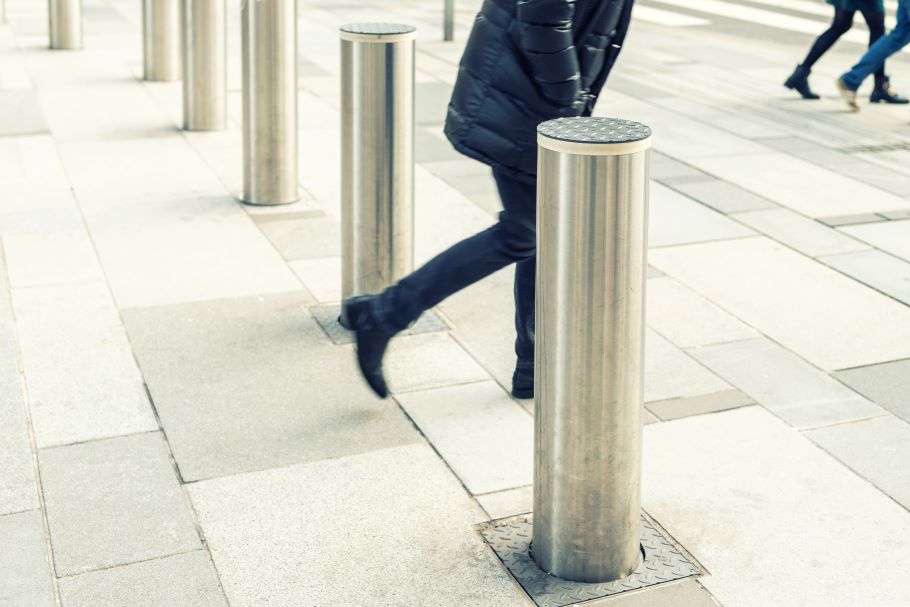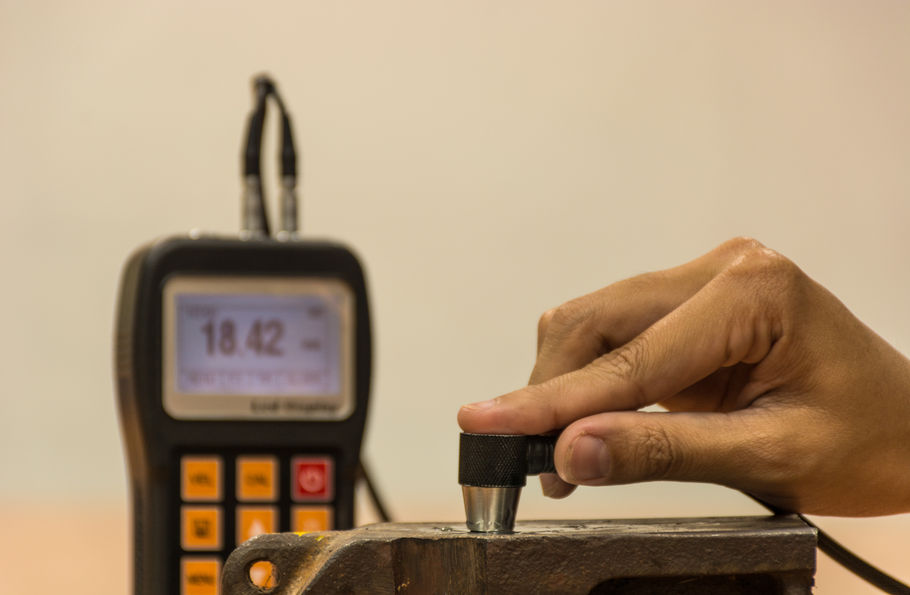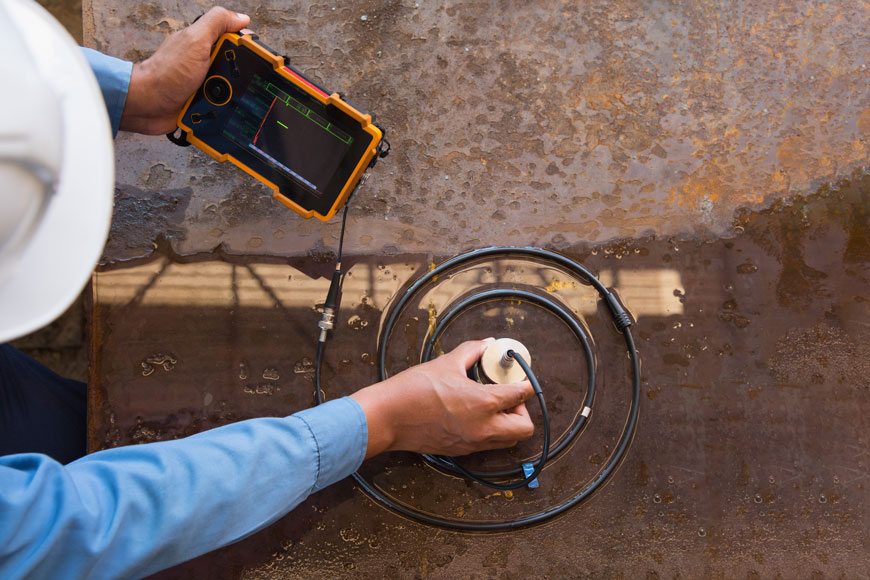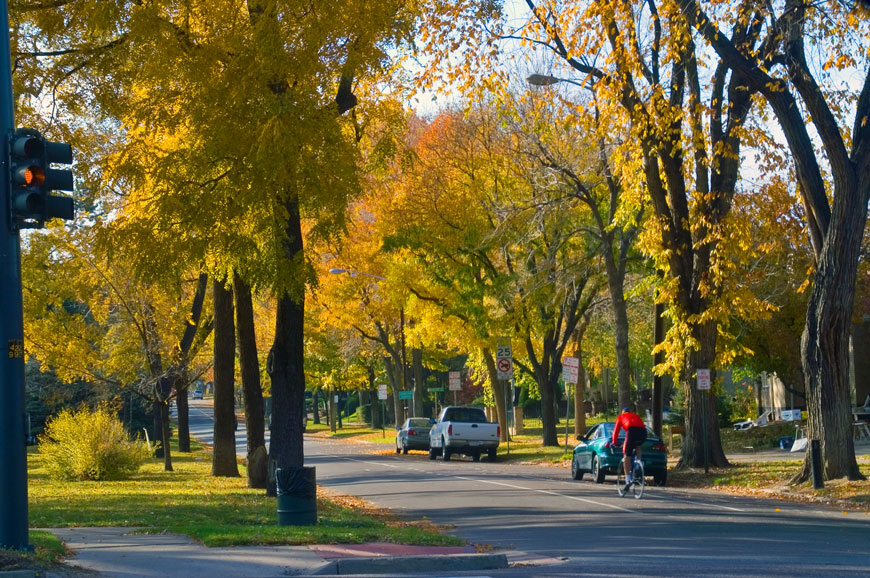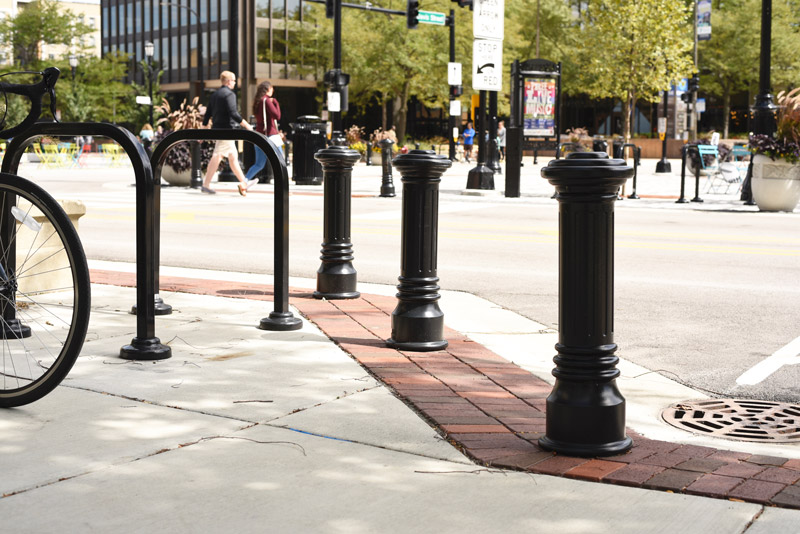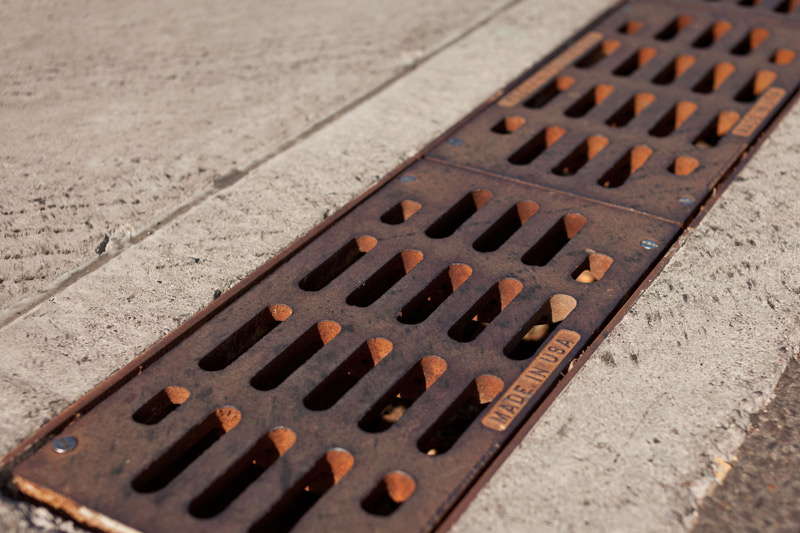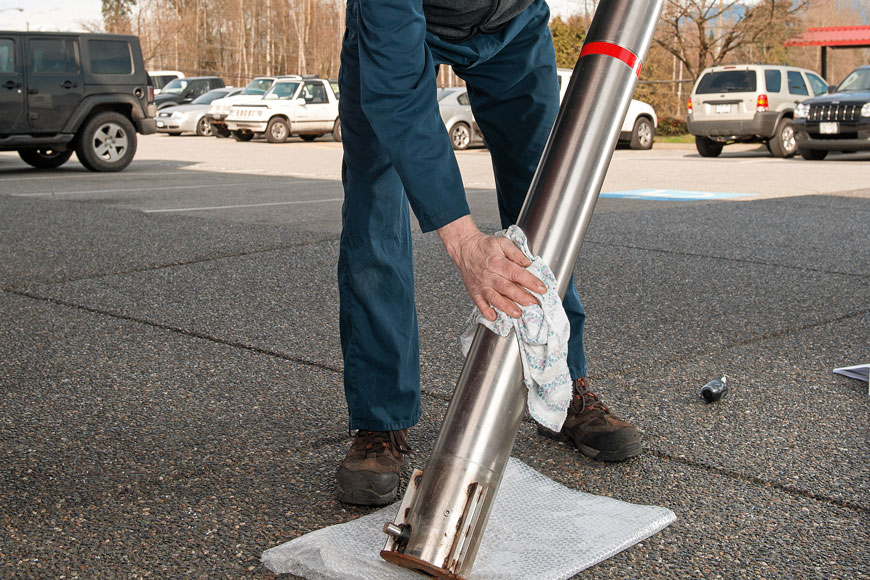Pre-season care for traffic posts
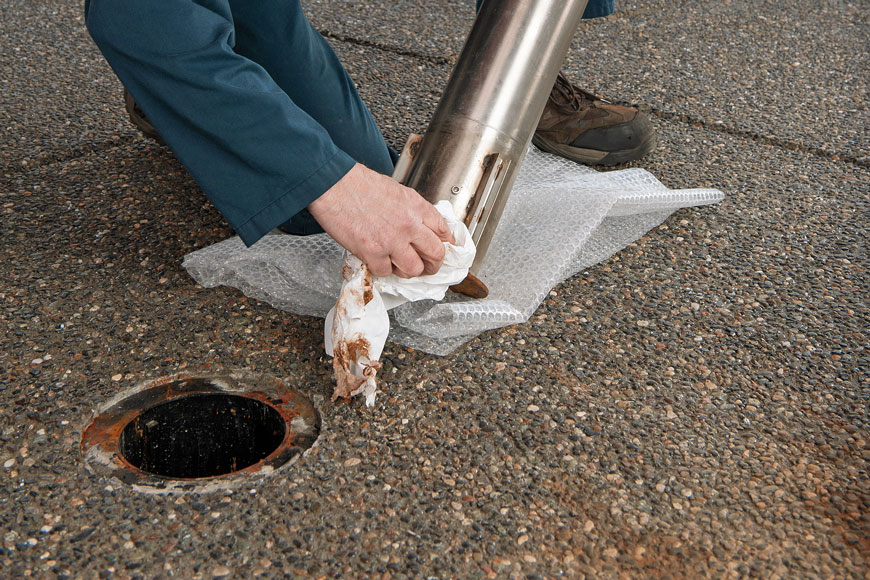
Retractable and removable bollards are installed with in-ground receivers that accommodate embedding and storage. They offer exceptional convenience in controlling access to restricted areas. However, they incorporate mechanical components that require on-going maintenance and attention. The cold, winter months especially can place great service demands on bollards. Below-ground receivers can be susceptible to corrosion and/or seizing if exposed to significant amounts of rain, snow, ice, and/or de-icing chemicals. A comprehensive winterizing process can help prevent this damage.
Retractable and removable bollards should be serviced regularly to ensure they remain free from moisture and debris. Ongoing proper care will ensure daily functionality for ongoing operations. In the late summer or early fall, pre-emptive maintenance will help prepare the bollards for the harsh conditions of winter.
1. Keep receivers free from debris
During fall, leaves and other debris can accumulate on concrete surfaces. Along with excess moisture, this debris can affect the functionality of retractable and removable bollards, creating offsetting, or blockages, that can cause posts to seize. Below ground receivers should be kept as clean as possible. Throughout the year, surface areas should be cleared regularly to prevent sand, rocks, leaves, or other debris from falling into receivers.
Sweep debris in an outward motion, away from the bollard’s receiver. If small debris does accumulate in the receiver, it should be removed immediately with a wet/dry vacuum cleaner (such as a Shop-Vac). Standing water on the concrete surface surrounding the bollards should be removed whenever it is noticed. This can also be done with a wet/dry vacuum.
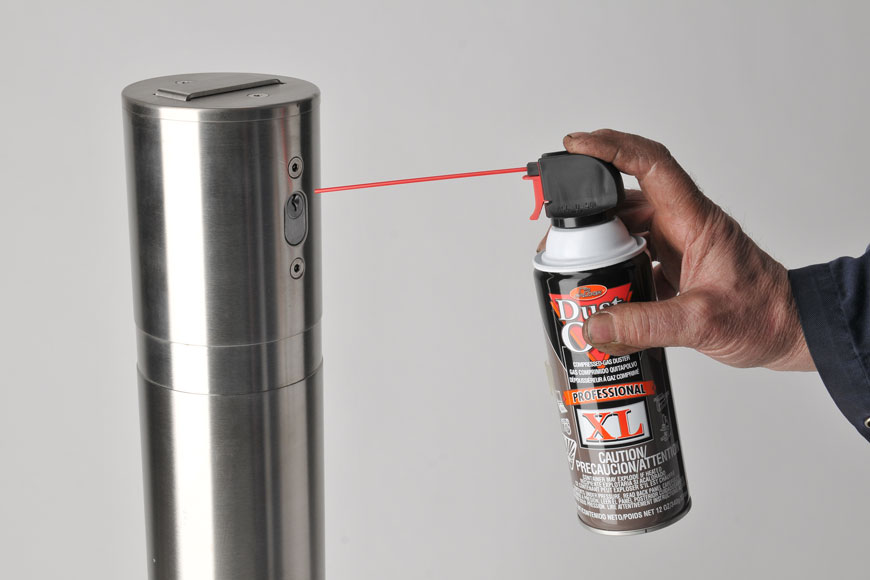
2. Examine bollards
Examine bollards for any surface or structural damage, as these issues can worsen through the winter. Scrapes, scratches, and graffiti constitute surface damage, while dents and rust affect the structural integrity of a bollard. All forms of damage should be treated as soon as possible to avoid further deterioration. For significant damage—such as cracked or broken components—or missing parts, bollards should be taken out of service until repaired or replaced. Preparing for winter is a good time to inventory needed replacement bollards and parts.
3. Clean bollards
Bollards should be cleaned prior to winter to remove any accumulated surface debris. Dirt or debris stuck to a bollard may fall into the receiver and should be removed immediately. Regular cleaning will also prevent abrasion damage and ensure lasting aesthetic value. For mild cleaning, both powder-coated and stainless steel bollards can be rinsed with water and air dried (in a warm environment, indoors if necessary) or wiped with a soft, dry and lint-free cloth. For heavier cleaning, wash with mild soap and a soft cloth or sponge. To avoid staining, cleaning solution should be rinsed away immediately. Many installers have found Citrisurf 77 Plus to be an effective agent for eliminating hard-to-remove stains from stainless steel bollards.
4. Remove any rust
Leading up to cold and wet winter months, which will exacerbate any existing corrosion, bollards should be inspected for any signs of rust. Rust is not only unsightly, but if left untreated, it can also damage the structural integrity of bollards. To remove rust from stainless steel bollards, apply an all-purpose lubricant and scrub the bollard with a synthetic scouring pad in the direction that coincides with its grain. For powder coated bollards, use an abrasive sandpaper to remove rust and then seal with an exterior metal primer and a matching top coat of enamel touch-up. For major areas of corrosion, bollards may need to be replaced or recoated.
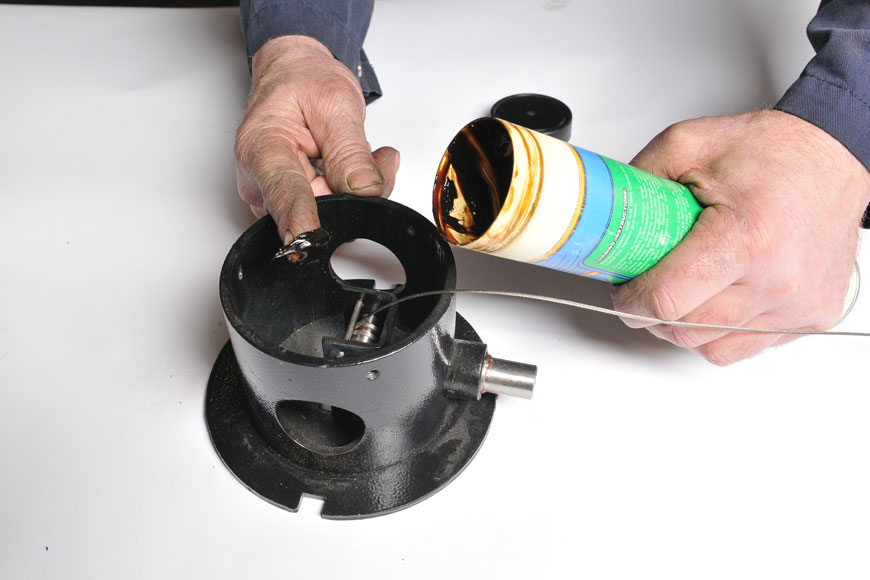
5. Lubricate and de-ice whenever necessary
Even with regular maintenance, trace amounts of moisture will freeze in sub-zero temperatures, which can cause bollards to seize. Seizing can be a result of frozen moisture on the surface of the bollard in areas where it contacts the receiver (around the receiver collar or internally below ground), within the bollards internal locking mechanism or within the keyhole. De-icing solutions or other alcohol-based products, such as hand-sanitizer, can be used to unfreeze and dislodge seized bollards. However, freezing may continue to be a problem at low temperatures. Generously lubricating a retractable bollard’s mechanical components with assembly grease will help performance in cooler temperatures.
These few simple steps can prevent many problems during winter, but proper care and regular maintenance should be conducted throughout the year. Regular inspections and cleaning will ensure bollards maintain their aesthetic value and do not become damaged by the elements.

